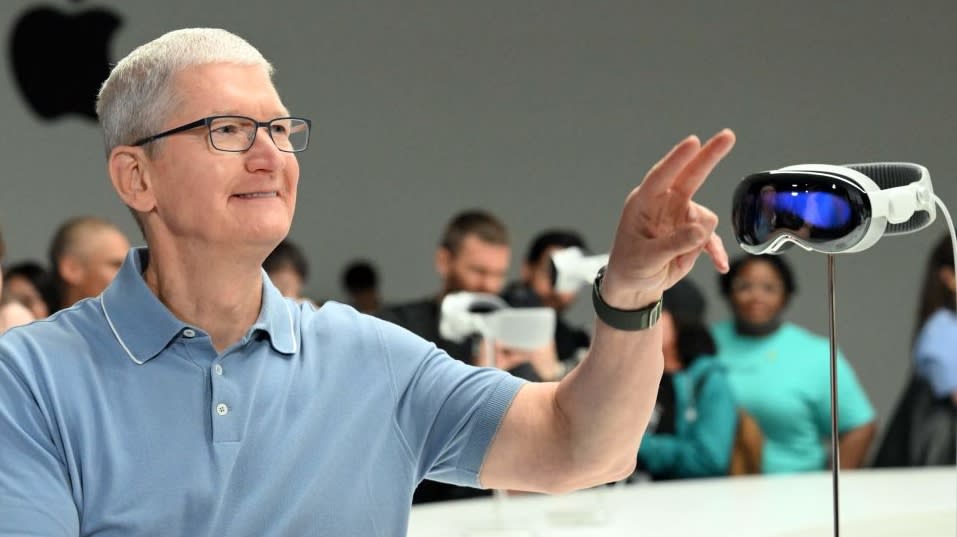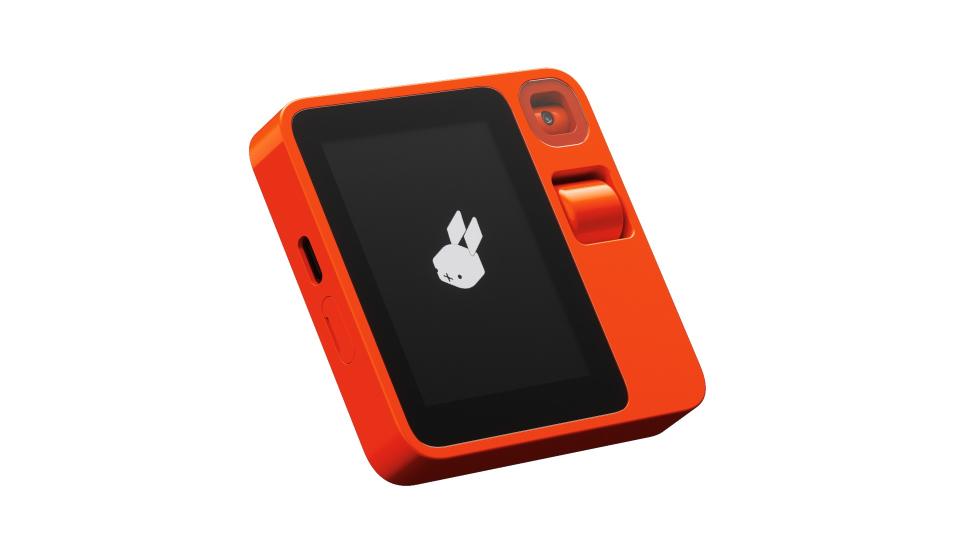Apple’s post-iPhone era just got hijacked… by rabbits!?

The term “post-iPhone era” has been thrown about more times than a beach ball at Dodger Stadium. But it’s a hollow claim, a vacant lot or placeholder, put there in anticipation of the ‘next big thing’ heading our way. It means very little and doesn’t point toward any one particular device as the gateway to this supposed all-new generation.
However, the fact it has caught on so much is an indicator of how badly it’s needed. Our cramped, lactic acid-rife legs are ailing and waning as we tread water in the tired void of by-the-clock, by-the-book, “Buy the damned thing, already” creatively bankrupt annual iterations of once great but slowly stagnating smartphones.
It’s time for something new. We’ve been tapping and swiping for neigh on 18 years, and our senses have become dulled to the meridian response caused by the bubble-wrap pop from the dab of our digital keyboards. It’s not that there’s some glaring issue with smartphones, but they have become a cluttered time-sink of distractions and social media black holes outfitted with exceptionally overpowered hardware that’s generally going to waste.
The Vision Pro: Apple’s best candidate
Apple believes the upcoming Vision Pro is that particular ‘something new,’ much to the disagreement of many others — possibly due to the headset’s unfathomably inexcusable price tag of $3,500 or the common knowledge that no, you will not be wearing Apple’s Scubatrooper helm as an all-day accessory.
The Vision Pro isn’t exactly ‘new’ either, it’s already been beaten to the AR punchline by Meta and its Quest 3 headset in both release and asking price. While the iPhone wasn’t the first smartphone (regardless of what Apple wants you to believe), it revolutionized the market —- and it helped that the average Joe or Jane could afford to buy it.

If Apple really wants to bring about the post-iPhone era then it's potentially time to head back to the drawing board for some genuine imagineering and return with something revolutionary in tow. Then again, who says we have to wait on Apple to do this anyway? The Cupertino company may have defined the generation that came before, but in the wake of certain CES 2024 announcements, this new generation might no longer be theirs to define.
The fact is, if you thought the post-iPhone era belonged to Apple, you were wrong.
Pulling a Rabbit out of the hat
AI is flourishing and Apple’s fashionably late approach to this new generation of tech has left it playing catch-up to an ever-growing list of competitors. Many of which see AI as a key component to claiming the post-iPhone era for themselves.
Microsoft pushes on with Copilot as they shape Windows into an AI-assisted experience, Google and Samsung share a mobile AI ecosystem powered through the Search giant’s Gemini multimodal AI, and even OpenAI is partnering with Apple alum Sir Jony Ive as they seek to develop the not-at-all-on-the-nose ‘iPhone of AI.’ There are even several former Apple employees behind the development of another potential post-iPhone era candidate: the Humane AI Pin.
With the competition racing ahead, and if AI is truly the key to the next generation of devices, it looks increasingly possible that the post-iPhone era could coincide with the post-Apple era of dominance. It would require something immensely special and unique for Apple to turn this lead around, a real magic act.
Someone would need to get on stage and pull a rabbit out of the hat to alter the current course. And at CES 2024, that’s exactly what happened — only it wasn’t Tim Cook on stage wowing audiences with a bag of tricks. The man holding the Rabbit was Jesse Lyu, and he may just have stolen the post-iPhone generation with his brand’s unveiling of the r1 AI Companion.

Rabbit r1 AI Companion: Welcome to the post-iPhone era
Heist movies are typically ensemble cast affairs with intricate plots and schemes meticulously laid out to ensure the heroes make off with the goods before riding into the sunset. But when it came to stealing the thunder of massive companies like Apple, OpenAI, Microsoft, and Google, all it took was one man with a Rick Astley poster and a hankering for Pizza Hut.
The aforementioned Rabbit in the hat is the company Lyu is responsible for founding, Rabbit Inc.. Tasked to create the simplest mobile device capable of all the complex tasks modern smartphones are capable of — but through a unique and intuitive natural language interface. To that end, Lyu’s company has been seemingly successful, developing the rabbitOS operating system that uses a Large Action Model (LAM), similar to the Large Language Models (LAMs) used by ChatGPT and Google Bard, that can interact with any app on your behalf to carry out tasks.
Whether that means ordering food or shipping out on vacation, rabbitOS is capable of more than just simple replies, instead taking direct action on the user’s behalf to accomplish any given task. All it takes from the user is a single verbal command, making rabbitOS one of the most easy-to-use operating systems seen to date, and widely accessible by all.
RabbitOS is housed inside of the brand’s first consumer device: the r1 AI Companion — a simple, stand-alone, pocket-sized mobile device outfitted with a microphone, speakers, 2.88-inch display, and 12MP camera. The r1 is sleek and stylish, modern and minimalist, and offers a Nothing brand-familiar aesthetic thanks to a shared design influence from Swedish manufacturer Teenage Engineering.
It's a device so simple it makes your TV’s remote control look like an operator's switchboard, with just the device’s touchscreen, an analog control wheel, and a Push-To-Talk button to interact with. However, despite its simplicity, rabbitOS is capable of many complex tasks across various apps. It can even use the 12MP camera (dubbed the ‘rabbit eye’) to analyze surroundings and provide answers and information with more context — ranging from recognizing images to providing recipes based on looking at the contents of your fridge.
Even more impressive is the device’s ‘Teach mode’ which lets the user teach the r1’s LAM how to use web, desktop, or mobile apps by example. This allows the user to train rabbitOS to complete even more complicated tasks, even in highly specific or niche apps. The possibilities are practically endless, and so too is the Rabbit r1’s usefulness. Better still, with all this in mind, the r1 AI Companion only costs $200.
Outlook
“We do not view Rabbit r1 to replace your phone” was the claim made by Lyu. “It’s just a different generation of devices.” In that sense, he’s entirely right. It remains to be seen what the r1’s screen is truly capable of, but it doesn’t seem like it would beat a traditional smartphone in terms of entertainment or gaming.
Not that this seems to be bothering too many people, as the $200 Rabbit r1 has already sold through two 10,000-unit batches in under 48 hours with a third batch of preorders currently available and expected to ship in May at the earliest.
Yes, the r1 isn’t a replacement for your smartphone. But only because your smartphone is part of the iPhone generation. Looking ahead, devices like the Rabbit r1 AI Companion could be set to fill that post-iPhone era void, bringing about a new phone era, an AiPhone era, if you will.
